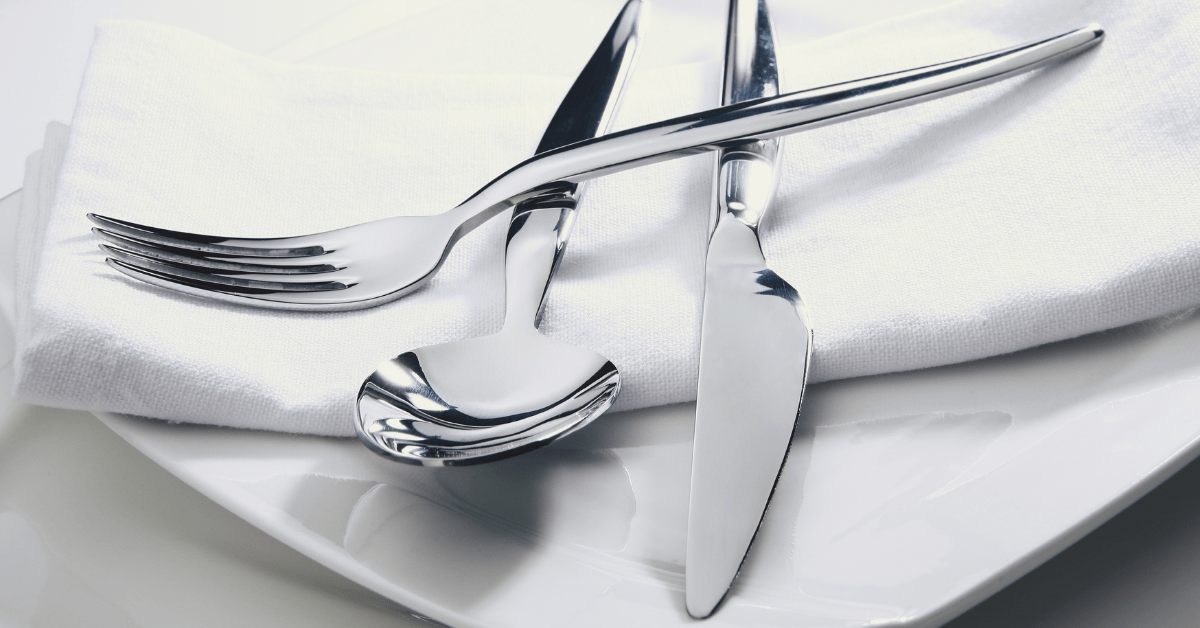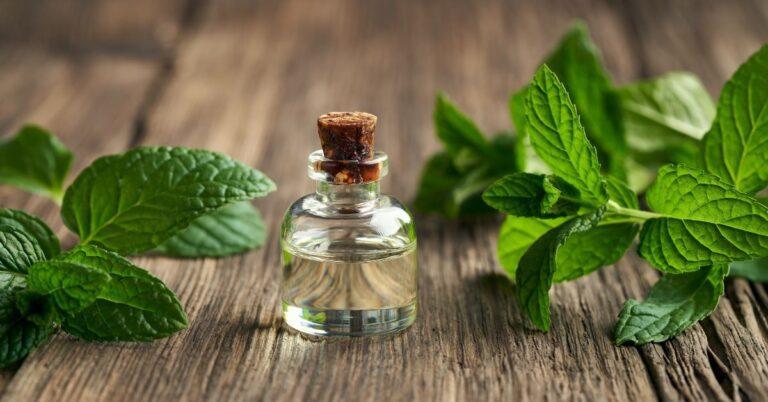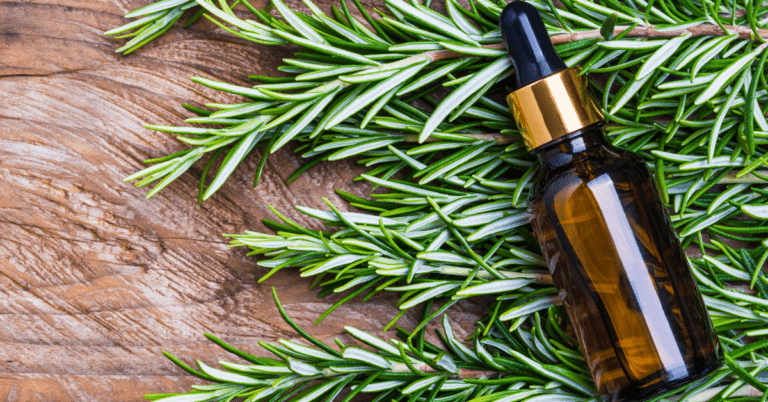How to Clean Silverware and Maintain It for a Tarnish-Free Holiday Season
Tips and Techniques for How to Clean Silverware
As the holiday season approaches, it’s time to unveil your beautiful silverware that has been carefully stored away all year. However, nothing can be more disheartening than finding heavily tarnished silver when you take it out for a special occasion.
But fear not! In this post, we will share a few expert tips and techniques you may need to clean and maintain your silverware to make sure it remains pristine and ready to impress! We’ve got you covered, from removing tarnish to implementing best practices for storing silver.
Why Does Silver Tarnish?
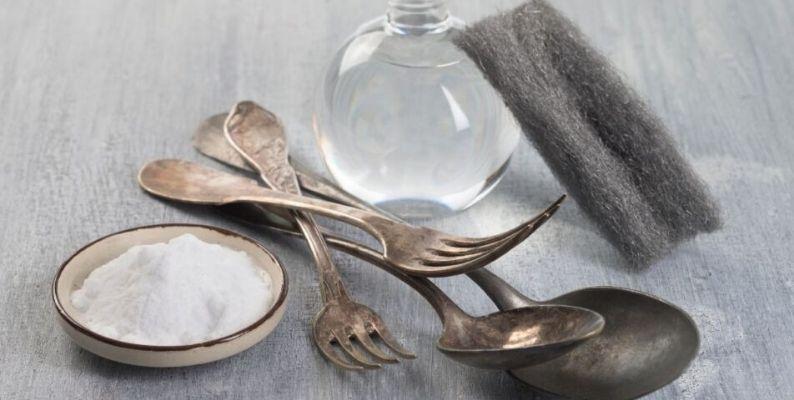
Before delving into the techniques of how to clean silver, let’s briefly understand why silver tarnishes. Silver reacts with sulfur compounds present in the air, causing a chemical reaction that leads to tarnish. Tarnish on pure silver is actually a compound called silver sulfide. Factors such as humidity, chemical exposure, and contact with certain foods can accelerate tarnishing. Following these cleaning and storage guidelines, you can prevent tarnished silverware and keep it looking radiant for years.
Method 1: Gentle Hand Cleaning for Tarnish Removal
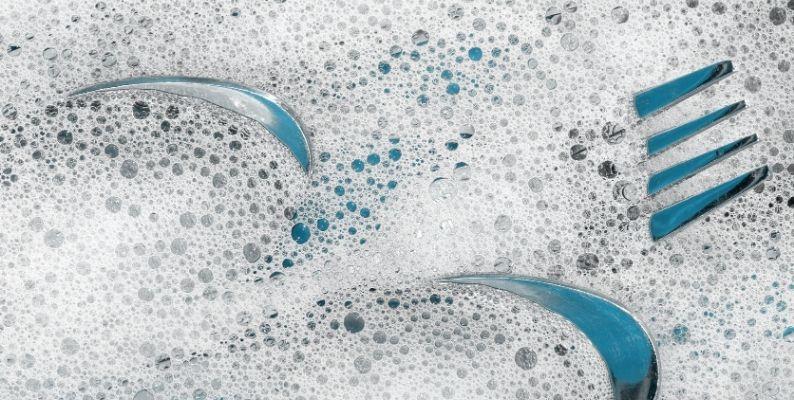
Cleaning your silverware using simple household items you probably already have in your kitchen cabinets is a good idea. By doing so, you will avoid harsh chemicals included in many commercial silver polishes.
Gentle hand cleaning is one of the simplest and most effective ways to clean your silverware. Here’s how:
- Prepare a basin of warm, soapy water using a few drops of mild dish soap.
- Gently wash each piece of silverware using a soft cloth or sponge.
- Rinse thoroughly with clean water to remove any soap residue.
- Absorb moisture by drying the entire surface of each piece immediately with a lint-free clean cloth to prevent water spots.
- Use a soft-bristled toothbrush to gently scrub away tarnish for intricate designs or hard-to-reach areas.
Always handle your silverware carefully to avoid scratching or damaging the surface.
Method 2: Polish Silver with Baking Soda Paste

Baking soda is one of the most versatile pantry ingredients renowned for its cleaning properties. Here’s how to use baking soda to clean silver:
- Add baking soda with water and mix a paste until it forms a thick consistency.
- Apply the paste to the tarnished areas of your silverware using a soft cloth or sponge.
- Gently rub the paste onto the surface, paying extra attention to heavily tarnished spots.
- Rinse the silverware thoroughly with warm water.
- Dry and polish silver pieces with a soft cloth to reveal their natural shine.
The mild abrasive nature of baking soda helps remove tarnish without causing damage to your silverware.
Method 3: Clean Your Silver with Aluminum Foil and a Salt Bath
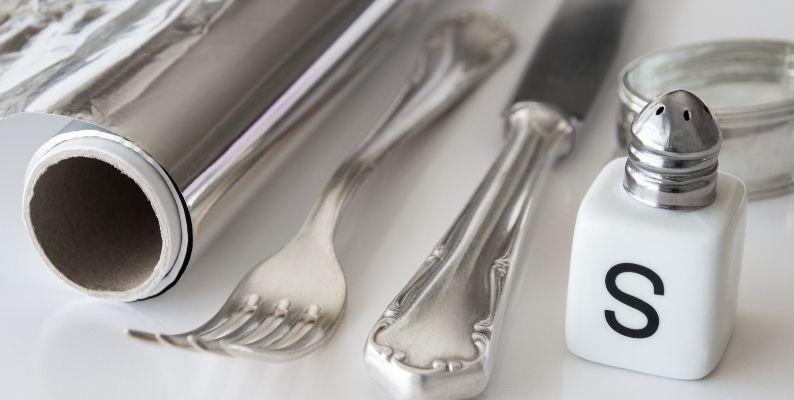
Cleaning silverware with aluminum foil and salt is an effective method for removing tarnish from silverware. Here’s what you need to do:
- Line a heatproof container with aluminum foil, shiny side up.
- Place your tarnished silverware on top of the foil.
- Fill the container with boiling water, ensuring the silverware is fully submerged.
- Add a tablespoon of salt to the water, allowing it to dissolve.
- Let the silverware soak in the mixture for about five minutes.
- Remove the silverware from the bath and rinse it thoroughly with water.
- Dry each piece carefully with a soft cloth.
The chemical reaction between aluminum, salt, and tarnish causes the tarnish to transfer from the silverware to the foil, leaving your silverware beautifully restored.
Storing Your Silverware
Once it is clean and free from tarnish, it’s essential to store silver correctly to prevent tarnishing further. Here are some tips for proper storage:
- Store your silverware in a dry, cool place away from direct sunlight and humidity.
- Individual silverware pieces should be wrapped in acid-free tissue paper or anti-tarnish microfiber cloth to protect them from scratches and tarnish.
- Consider using tarnish-preventive storage bags or containers, which create a barrier against tarnish-causing elements.
- Avoid storing silverware near rubber or cardboard, as they contain chemicals that can accelerate tarnish.
Maintaining the Shine
Regular maintenance is key to keeping your silverware radiant and tarnish-free. Consider these additional tips:
- Use your silverware frequently, as regular use helps prevent tarnish build-up.
- After each use, rinse your silverware with warm water to remove any food particles or residue.
- Dry and polish your silverware immediately after washing to prevent water spots.
- Avoid using harsh chemicals or abrasive cleaners that can damage the silver plating.
- Periodically inspect your silverware for signs of tarnish or damage and address them promptly.
Closing Thoughts About How to Clean Your Silverware 
Silverware is a pretty important part of the meal. It’s one thing to have food taste great, but if your guests are eating with dirty silverware, it could ruin their experience. These tips will help you keep your silverware ready to go when you want to use it! For more tips on making your life easier, check out our blog post on other ways to keep your kitchen spick-and-span this holiday season.
We hope this article helped provide some tips that can make hosting more enjoyable! If you need someone to help maintain order in your home before the holidays hit, let us know–we would love to be involved in making sure everything runs smoothly and stress-free. Contact us, and let us give you hand!

